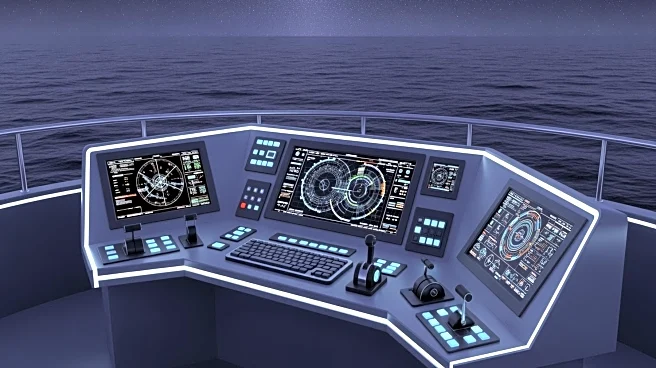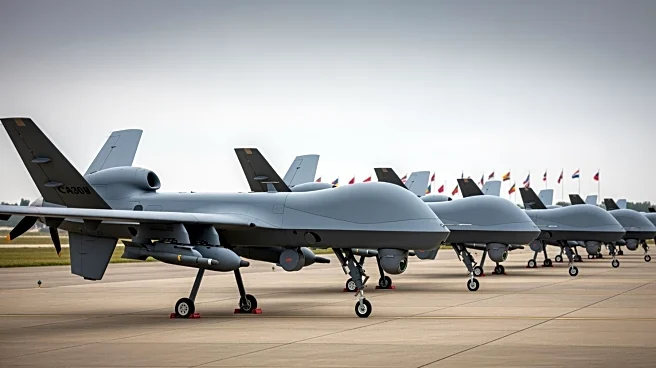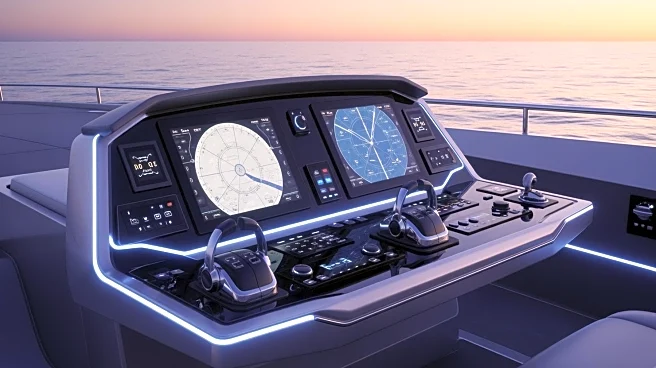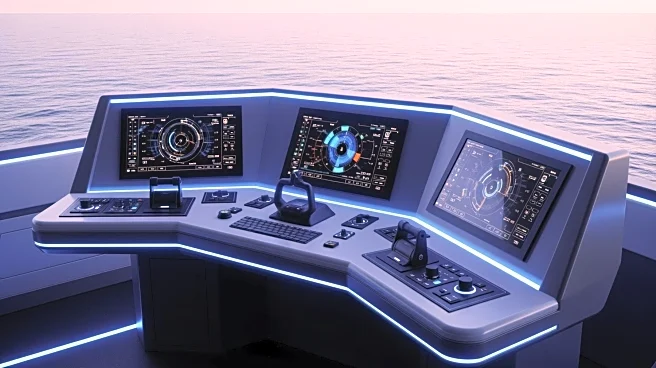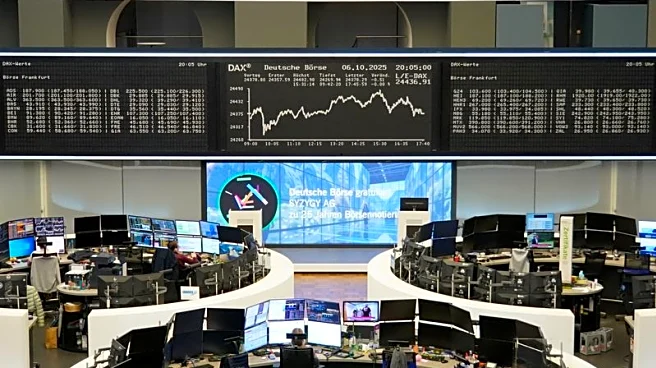What's Happening?
German navigation systems specialist Anschütz has launched 'Anschütz Autonomics', a new suite of solutions designed to enable autonomous navigation and mission automation for commercial, defense, and security vessels. The system, which has undergone successful
demonstrations and trials with partners in Germany and France, as well as the German Navy, is built on certified components that ensure safe and precise autonomous navigation. The core of the offering includes the SYNAPSIS Autonomics Navigation Suite and the SYNTACS Autonomics mission automation system. These systems enhance existing navigation capabilities with features such as optical target tracking, collision avoidance compliant with COLREGs, and advanced motion control. The solutions enable a range of autonomous capabilities, including dynamic collision avoidance, targeted interception, reconnaissance, and automated shadowing of high-value targets. Vessels equipped with Anschütz Autonomics can be controlled remotely from mobile tactical centers.
Why It's Important?
The introduction of Anschütz Autonomics marks a significant advancement in maritime technology, offering enhanced capabilities for both commercial and defense sectors. For commercial shipping, the system promises increased safety and efficiency through automated navigation and collision avoidance, potentially reducing human error and operational costs. In defense applications, the system supports high-performance Intelligence, Surveillance, and Reconnaissance (ISR) operations, providing strategic advantages in naval missions. The ability to remotely control vessels from tactical centers could revolutionize maritime security operations, offering new methods for mine detection, escorting, and shadowing suspicious targets. This innovation could lead to broader adoption of autonomous systems in maritime industries, impacting global shipping practices and defense strategies.
What's Next?
Anschütz plans to continue developing and scaling its autonomous solutions, potentially expanding their use across various maritime sectors. The company may seek further partnerships and trials to refine the technology and demonstrate its capabilities in diverse operational environments. As the system gains traction, regulatory bodies might need to address new standards for autonomous navigation and mission automation, ensuring safety and compliance with international maritime laws. Stakeholders in the shipping and defense industries are likely to monitor the system's performance closely, considering its implications for future investments in autonomous technologies.
Beyond the Headlines
The deployment of autonomous navigation systems like Anschütz Autonomics raises ethical and legal questions regarding the role of human oversight in maritime operations. As vessels become more automated, the industry must consider the implications for maritime labor, including potential job displacement and the need for new skill sets. Additionally, the integration of autonomous systems into defense operations could lead to discussions about the ethical use of technology in military contexts, particularly concerning surveillance and reconnaissance missions.
